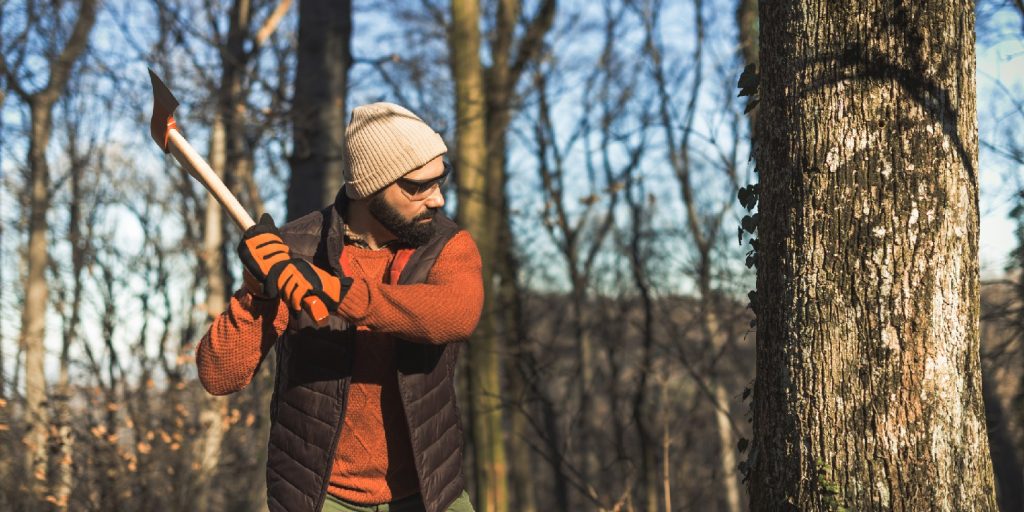Felling Axe vs. Forest Axe: What’s the Difference?

Axes are versatile tools used for centuries for various tasks, including chopping wood, clearing brush, and felling trees. Not all axes are created equal, and different types of axes are designed for specific purposes. Felling and forest axes are two common types of axes used in forestry and woodcutting. In this blog, we’ll explore the key differences between these two axes and help you understand which is best for your needs. We’ll give you tips for choosing the perfect axe and describe a few safety tips. If you’re in the market for a new axe, you are in the right place.
Felling Axe
A felling axe, as the name suggests, is primarily designed for the task of felling trees. It typically has a long handle, usually around 28-36 inches, which provides leverage and power to make deep cuts into the tree trunk. The head of a felling axe is heavier than other axes, with a sharp and narrow blade that can cut across the grain of the wood. The blade is typically curved and has a pronounced “bit” or cutting edge that allows for efficient and precise cutting.
Forest Axe
A forest axe is a more versatile axe designed for a wider range of tasks in a forest or woodland environment. It’s usually smaller and lighter than a felling axe, with a shorter handle, typically around 24-28 inches in length. The head of a forest axe is also lighter and has a broader blade than a felling axe, which makes it suitable for various tasks such as chopping wood, limbing, and processing small to medium-sized trees. The blade of a forest axe is usually straight or slightly curved, with a less pronounced bit.
Differences in Use
The main difference between a felling axe and a forest axe is the specific task they are designed for. A felling axe is primarily used for the initial felling of trees, where the objective is to make deep cuts across the grain of the wood to bring down the tree. It’s ideal for larger trees and requires more power and leverage due to its long handle and heavy head. On the other hand, a forest axe is designed for more general tasks in a forest or woodland environment, such as chopping wood for firewood, limbing branches, and processing smaller trees. It’s more versatile and easier to handle due to its smaller size and lighter weight.
Considerations for Choosing the Right Axe
There are several factors to consider when choosing between a felling axe and a forest axe. Consider the specific tasks you’ll be performing and the size of the trees you’ll want to work with. A felling axe may be the better choice due to its long handle and heavy head if you’re primarily felling large trees. If you need a more versatile axe for general tasks in the forest, a forest axe may be more suitable due to its smaller size and lighter weight. Consider your physical strength, experience, and comfort level with handling different types of axes, as well as the environment you’ll be working in.
Proper Use and Safety
Remember to follow proper axe safety guidelines regardless of the type of axe you choose. Always wear appropriate protective gear such as gloves, eye protection, and sturdy footwear. Use proper axe techniques, such as standing on stable ground, positioning yourself correctly, and using the axe with controlled and deliberate movements. Maintain a sharp and well-maintained blade, and always store and transport the axe safely to avoid accidents.
Conclusion
Understanding the key differences is essential when choosing between a felling axe and a forest axe. While both axes are perfect for tasks in forestry and woodcutting, they have distinct features that make them suitable for different purposes. A felling axe is ideal for felling large trees, thanks to its long handle and durable head, while a forest axe is more versatile and suitable for general tasks in a forest or woodland environment. Consider your specific needs, physical strength, experience, and the environment you’ll be working in when selecting the right axe for your needs. Always prioritize safety by following proper axe techniques and wearing appropriate protective gear. With the right axe and safe practices, you’ll be well-equipped to tackle your forestry and woodcutting tasks efficiently and effectively.
